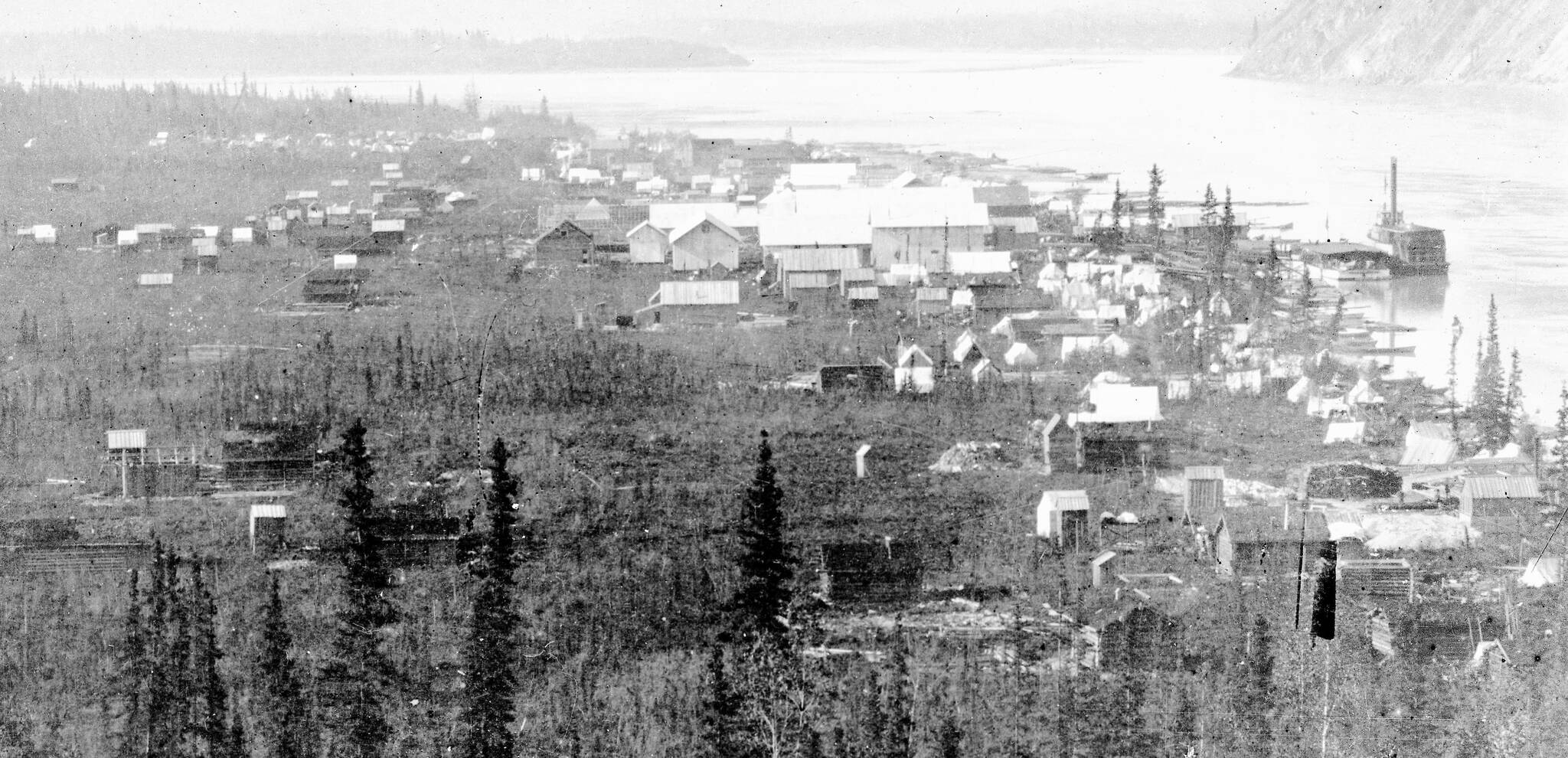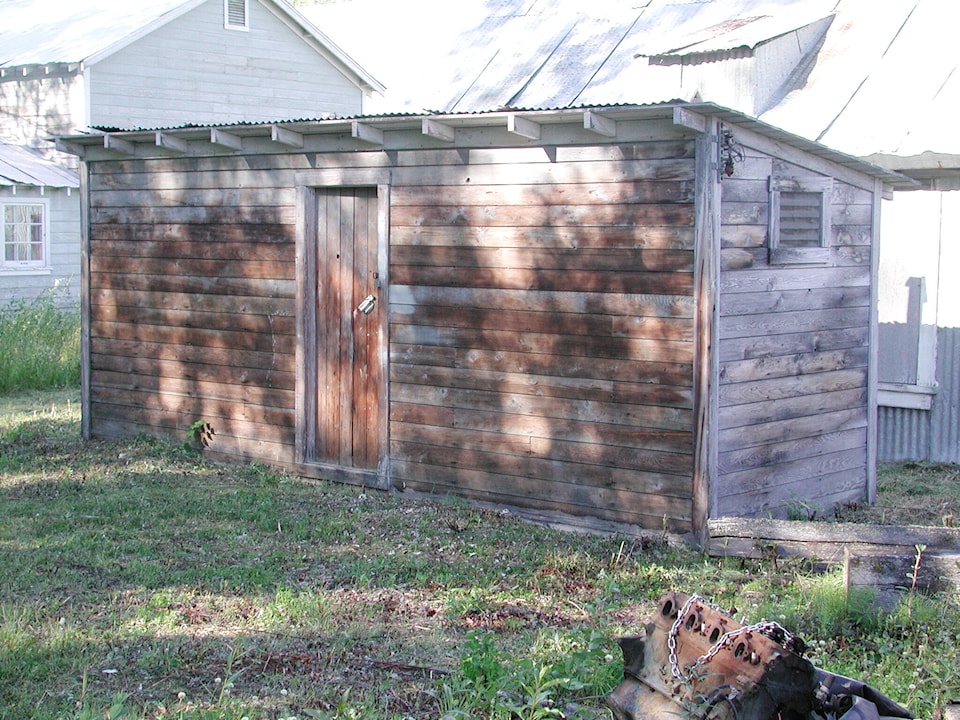When hiking the Chilkoot Trail, I had occasion to use the privy at the summit of the pass. It was clean, well maintained, and the view was a spectacular vista of mountains and snow. Parks Canada hauled the waste from here by helicopter to maintain a pristine setting on one of Canada’s foremost historic trails.
I wonder what was it like during the Klondike gold rush? I had never given this question much thought before. There were no helicopters to haul the waste away, and instead of 50 hikers per day, there were thousands. So where did they go? A preliminary scan of the literature does not offer an answer. Toilet habits were not described in the diaries of stampeders, or chronicled by the countless observers. Were there privies, or did the stampeders simply hunker down behind a snow bank to complete the task? Combined with the thousands of dead animals that littered the trails to the Yukon, the smell must have been awful when spring arrived.
The gold rush was an unplanned event, and people were in a hurry to move on, so who had the time to stop and construct a decent privy? I suspect that the roadhouses and restaurants on the trail offered some sort of facility, but there was nothing but a small shack at the summit occupied by the Mounted Police. Perhaps they constructed a privy – it would make sense – but with the volume of traffic on the trail, was there a constant lineup to use it?
Early photos at Bennett and Lindeman show countless tents set up for temporary use, but my scan of these images did not find evidence of special facilities. Later, when Bennett was well established with restaurants, hotels and other businesses, historical photos reveal the presence of outdoor privies hidden at the rear of the establishments. Would they have had indoor conveniences as well?
In the numerous published lists of supplies for the stampeders to take with them to the Klondike, I don’t recall seeing any references to toilet paper. Did they have the foresight to include toilet rolls in their kits? Toilet rolls were still in their infancy at that time, and were notorious for their splinters. Catalogs and the Farmer’s Almanac were both popular substitutes, but I can’t imagine stampeders lugged heavy catalogs with them for the purpose. And if so, how did they manage to keep them dry? I visualize endless deposits of used tissue along the route to the Klondike. Did the travelers dig pits or did they abandon their waste on the surface and continue on their way?
The issue would have been compounded when they reached Dawson City, as the population grew rapidly. During the early years, there was no sanitation system in place. I found some early photos from 1897 that clearly showed outhouses standing adjacent to cabins at the north end of Dawson. But what about the businesses concentrated in the heart of the city?
I have done extensive research into theatres, saloons and dance halls, but the descriptions focused upon the bar, the gaming tables and the theatre and dancing areas. Not one description of a water closet did I find. So where did all those thirsty miners go when they had to pee? There must have been separate facilities for the ladies who worked in these establishments, but never a description. Photographs weren’t any help, although if one could devote the time to scrutinize the thousands of photos, perhaps there is evidence hidden in those silver images.
The result of the chaotic sanitation in the earliest days of Dawson resulted in a serious outbreak of typhoid, causing 100 deaths before the community became more established.
Eventually, a water and sewer system was constructed, but from all accounts, the system froze in the winter, and Dawson residents were forced to resort to “honey buckets,” which were exchanged on a regular basis.
Historic St. Andrew’s Manse, in which I lived in Dawson, still had the hatch at the rear of the building, where the honey buckets were removed and replaced during the winter months. Even Government House, the mansion in which the Yukon’s Commissioner lived, had a similar access panel at the rear of the building. I’ve seen the photos, and the floor plan for the building.
Pierre Berton is one of the few individuals who have written about domestic sanitation in the early days: “I should tell you,” he said, “that we had no bathroom … We had no running water. The only convenience was a single holer in the basement which was reached not by a stairwell, but by a ladder leading down from a trap door in the kitchen.”
The waste removal in the winter time was relatively straight forward. In most cases, it was frozen solid when removed. These giant ice cubes were hauled to the north end by the local scavenger, and dumped on the river ice, awaiting the spring “flush.” The people downriver could not have appreciated seeing this waste floating by each year.
I turned to the territorial ordinances regarding sanitation and found that by 1902, legislators had turned their attention to the serious issue of toilets. Any person having a cesspool or privy pit that was believed to be contaminating drinking water was required to remove the contents thereof and fill it in. Chapter 65 of the ordinances took the matter further, requiring regular cleaning of privies between the months of May and November, and that they be at least 16 metres away from any well.
Territorial council revisited the issue of toilet facilities in 1907, when they assented to an ordinance requiring that all roadhouses should provide male and female outhouses, made of wood. The provision for heating them mentioned in the newspaper account of the debate, was dropped from the final wording of the ordinance.
What about horse manure? And the countless dogs? Council also paid attention to animal waste, stipulating that no more than two wagon loads of manure would be allowed to accumulate on any property.
In the goldfields, every mining claim had its own privy. The dredging company constructed communal multiseat structures at Bear Creek, and in the goldfields. One ingenious employee at Bear Creek attached lines to the toilet seat lids in the privy behind the bunkhouse, which were attached to semaphores on the roof. Thus he could tell by looking from the bunkhouse door if all the seats were occupied. This saved a pointless trip to the crapper in the cold weather.
At the dredge camp at Granville, I was told, the multi-seat outhouse was constructed over a diverted branch of Dominion Creek, which provided a continuous flush. On one occasion, someone set an oily cloth ablaze then dropped it in the current upstream of the building, which carried the flaming rag through the outhouse, singeing several unsuspecting bottoms!
I have to dig a little deeper to get to the bottom of this subject. I haven’t yet explored the situation in early Whitehorse.
Michael Gates is Yukon’s first Story Laureate. His latest book, “Hollywood in the Klondike,” is now available in Whitehorse stores. You can contact him at msgates@northwestel.net

